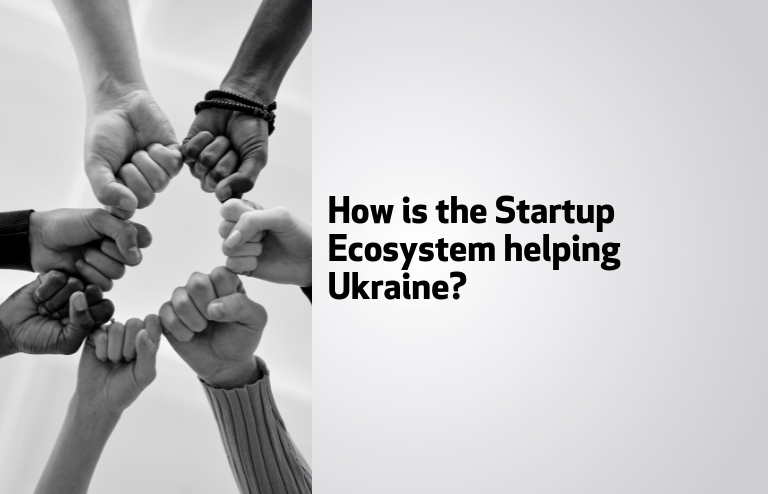A well-established team with a leader plays an important role in developing business operations. If you want to be successful in talks with potential investors, you must ensure proper team organization or structure. Work hard, believe to what you want to achieve and prove you’re truly committed – only then will you become successful – argues Krzysztof Krawczyk, partner at CVC Capital Partners fund. If you want to find out what are the roles of a team and its leader in a start-up according to our expert – read on.
A well- established team in a start-up – what does it mean? What kind of teams attract investors’ attention? What is of crucial importance?
Krzysztof Krawczyk, CVC Capital Partners: The first dilemma related to team building is choosing the right moment. You cannot miss the point when a one-person start-up becomes a limitation to itself and must turn into a team. Needless to say, at an early stage of business development, an entrepreneur doesn’t have sufficient means to invest in building a comprehensive team covering all the key capabilities. Building of a team is a process, which should start at the very beginning of business operations and progress gradually, focussing on the key roles for continued business development. The main team shapes the culture of the entire organization, something that cannot be achieved by preparing a slideshow that would take a few days to complete. Organizational culture is one of the key factors determining success at subsequent stages of business development and hence many investors take into account its formation process starting from the earliest stages when making business decisions.
Every start-up wishing to be successful and planning to develop on a large scale cannot rely on one person only because of the possibility of prosaic mishaps and the fact that even the best leader has some weak spots, which he may not be aware of himself. Building a team can also bring immense satisfaction and be a tangible proof of our accomplishments, development and inspiring others with our vision. A well-established team is made of people who share a common set of values. This means that the people in a given company perceive business operations and goals related to them in a similar way, which is the very foundation of building an organizational culture, which, in turn, as I have already mentioned – is of primary importance in any enterprise.
Team leader – one or a few? How would you characterize a good leader?
KK: Every business leader must be very much success-oriented. It’s exactly this determination in pursuit of success that will decide who will be the winner and who will be the loser. How many entrepreneurs would follow in the footsteps of one of the laureates of the previous edition of the CVC Young Innovator Awards and would sell their apartment to finance another stage of their business development and how many would give in and decide not to take the risk? Second of all, a leader should not only focus on the greatness of the product he has created, but also about on how great a company he wants to build. As I have already mentioned before, a good leader should be aware of his weak spots and, bearing them in mind, carefully choose his business partners and assign them with tasks accordingly. Being a visionary won’t prove useful in this process, which requires effective managerial skills.
When it comes to the number of leaders in a start-up: whether there should be only one leader or whether “multiple voices” should be heard, I am rather sceptical when it comes to the effectiveness of democratic solutions in business. Let us have a look at the contemporary global leaders created over the last past decades – a well-established team was always led by a charismatic leader, who inspired and motivated everybody to work hard. At the preliminary stages of business development there may be a dissonance between motivations and goals of the leader and a part of the team. Therefore, a leader should discern whether he made no mistakes while building the organization that should be corrected immediately instead of aggravating the dysfunctionality or conflict. At the end of the day, it’s the leader that risks the most and remains responsible for his business, so he is the one to make business decisions in line with his instinct and to the best of his knowledge.
What’s important for investors when assessing the team and its leader?
KK: Investors care only about products in the market context: why does a client need exactly this product or service and will he be using them rather than the already existing ones or ones that may appear in the future. This is the foundation for a business plan and making an investment decision. When you strive to obtain financing, you should equip yourself with plenty of market arguments proving that a start-up is well acquainted with the client, knows his preferences as well as the ecosystem it wants to operate in. As for team assessment, the key issue is its complementary structure, various experience, varied employee skills and coherent vision. Another thing is the motivation and business sentiment of the key players, which can be evaluated, for instance, by their stake in the business. This is a guarantee for the investor that they will make sure his money is invested wisely and treated as their own, and that they will not drop out of business disappointed by the first obstacles. It is also good to know that the team is complete at the given stage, i.e. provides such human resources and skill sets which allow to make another step in business development as well as ensure effective use of the available capital. Being an investor myself, I frequently make conditional decisions about getting involved in a project and a team depending on whether it’s complemented.
What are the most frequent mistakes that teams commencing talks with investors make? How to avoid them? What should you remember about during the talks?
KK: First of all, every start-up should answer the question “Why do I need capital”. This is where they frequently make a mistake by merely identifying the goals without setting them in a slightly broader perspective. They should determine for how long the given funds will be sufficient, what they will allow them to achieve and what comes next – how much money will a start-up need before it becomes self-sufficient. Not all the investors are equally patient or have the same amount of capital, so it needs to be determined whether an entrepreneur is aware of the investor’s resources and knows whether – as long as the given objectives are reached – he will be interested in participating in another round of financing? And last but not the least – it is important whether both the entrepreneur and his investor share a common understanding of a time horizon and a way of getting out of the investment.
Once we have already invited an investor on board, what comes next? How to build good relations with investors?
KK: Again, both the entrepreneur and the investor alike should ask themselves this question before they start collaboration. We strive to find a perfect balance between the investor’s need of comfort and the capabilities of the fledgling business. The most popular solution is to hold regular meetings on the executive level, which in case of smaller businesses, are less formalized. Both parties should agree on such a formula that would ensure enough time spent together so as the investor can rest reassured that the start-up is moving in the agreed direction and they should also determine how often the meetings are to be held and what information should be exchanged. A good investor will help a fledgling business in this respect and suggest solutions facilitating mutual communication. And the best investor is such that, besides offering his capital, will also assist us with his expertise or the knowledge and experience of his experts.






